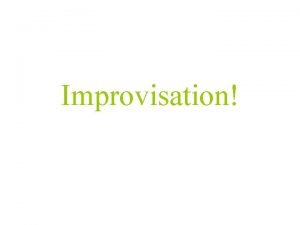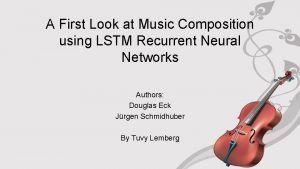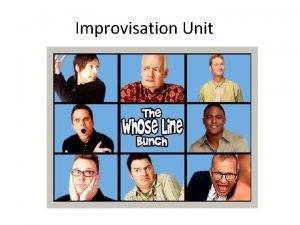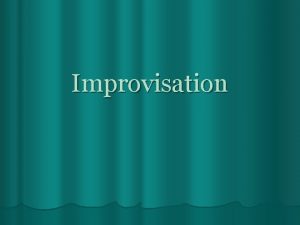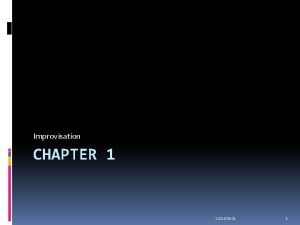Chapter 2 Improvisation Improvisation l The portrayal of







- Slides: 7

Chapter 2 Improvisation

Improvisation l The portrayal of a character or a scene without rehearsal or preparation. Foundation of interpretation, emphasizing creativity and imagination.

Two Approaches to Improv l Character-Centered Approach – focuses on a character or group of characters who experience different situations one after another. l Examples – Friends, Seinfeld l Situation-Centered Approach – a single situation and places a number of characters in te situation to demonstrate how different personalities will respond to the same event. l Examples – Lost, Survivor

Basic Techniques l Work out setting carefully. l What is in your space? Distance from object to object? Where is the door/window? Who else is in the room? Use actions to suggest entrances and major plots. l Visualize your character in detail. l l l What are you wearing? What time of day is it? Male or female? Age? Height? Before you enter, take on the physical attitude of the character.

Questions to ask about your character… l Who am I? l What kind of person am I? l How am I different from the other characters? l What are the fewest things I can do to convey the most information about my character? l What does my character need or want?

Reminders for Successful Improvisation l l l Speak loudly enough to be heard throughout theatre or auditorium. Do not hide behind pieces of furniture or other people. Move about freely. Try not to stand beside other characters all the time. Take plenty of time to speak and to move so that you can create a definite impression. Stay in character the entire time you are on stage.

The Motivated Sequence *Basis for all acting!!! 1. 2. 3. 4. 5. You experience the stimulus. You respond instinctively to the stimulus. (primary response) The idea “connects. ” Your brain registers the stimulus – this usually takes only a fraction of a second. (idea connection) Reflex action – body reacts (secondary response) You react vocally and/or physically with your main response.
